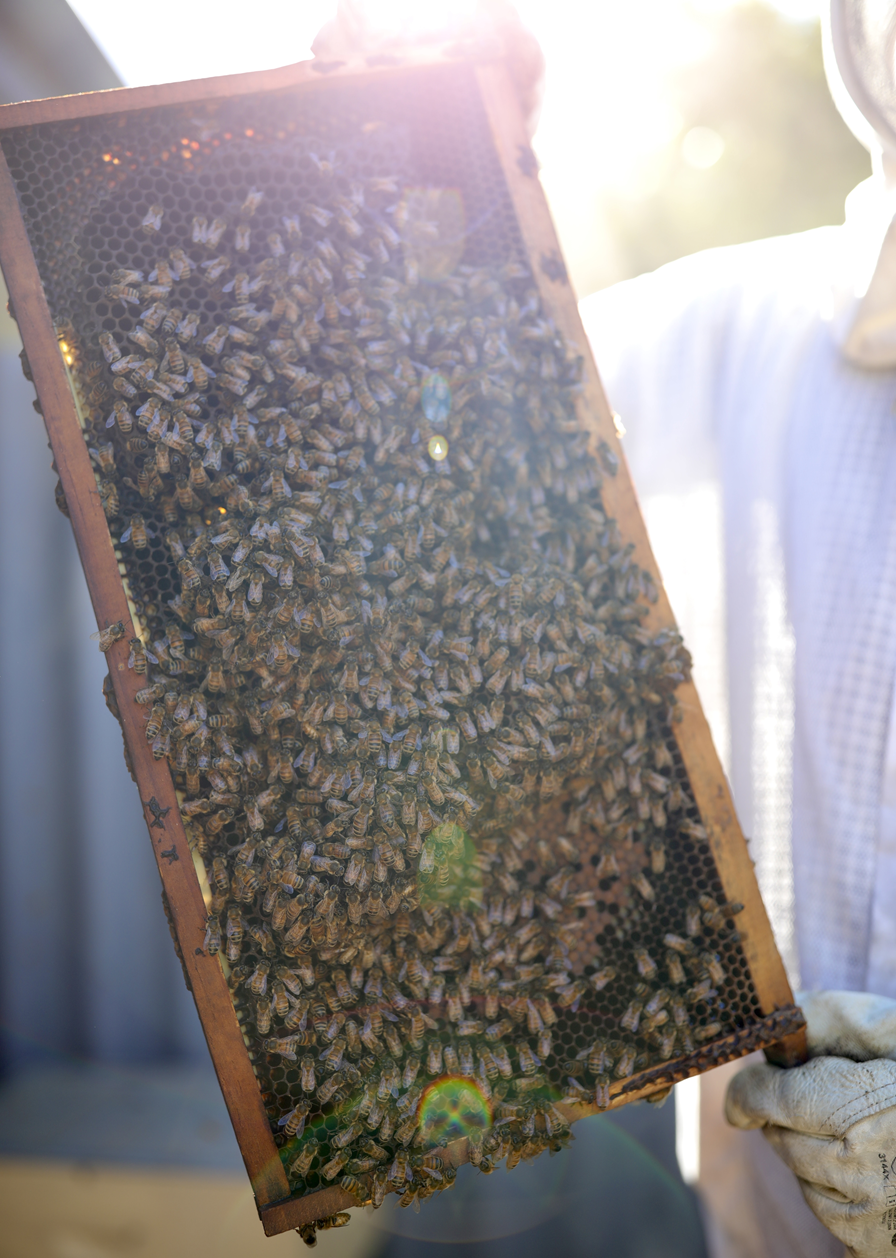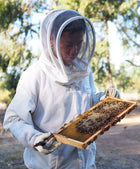Authentic Honey in Singapore: How to Find Pure, Real Honey

Authentic Honey in Singapore: How to Find Pure, Real Honey
Introduction
Not all honey is created equal. In Singapore’s market, countless jars labeled “pure honey” hide a sticky truth – many contain added sugar syrups or have been heavily processed. In fact, honey is among the world’s most adulterated foods. Authentic honey – the kind that is 100% real and unadulterated – can be hard to spot amid the fakes. This guide will show you what authentic honey really means, why it matters for your health, how to identify pure honey versus imposters, and where to get authentic honey in Singapore that you can truly trust.
What Does “Authentic Honey” Mean?
Authentic honey refers to honey that is pure, raw, and unadulterated – essentially honey as nature intended. It’s produced by bees from nectar, without any cheap additives like corn syrup or sugar. Unfortunately, adulteration is a global problem: a study found that 52% of tested Asian honey samples were fake or adulterated. This means many products sold as “honey” (even at a premium) are diluted with other sugars. Genuine honey, on the other hand, contains only the natural sugars, enzymes, pollen, and nutrients that bees put into it. It hasn’t been overheated or ultra-filtered, processes which strip away beneficial elements. Raw, authentic honey comes straight from the hive and retains its goodness – it’s often high in antioxidants and natural antibacterial compounds. By contrast, counterfeit or processed honey is basically syrup with none of the health benefits. In short, authentic honey = real honey with nothing added or removed.
Why does authenticity matter? For one, you get the health benefits you expect. Pure honey is prized for enzymes, antioxidants and antimicrobial properties. These give honey its soothing effect on coughs and its wound-healing abilities. Fake or blended honey robs you of these perks – you’re essentially left with sugary liquid empty of nutrition. There are also safety concerns: adulterated honey might contain residues like antibiotics or chemicals from improper practices. If you care about what you feed your family, knowing your honey is authentic provides peace of mind that you’re getting a wholesome, natural product, not a lab-made concoction.
How to Identify Pure, Authentic Honey
Buying honey can feel like a gamble, but there are clear signs that can help you pick out the real deal. Here are some tips to ensure you’re getting pure honey and not a sugary impostor:
-
Know the Source: Choose brands or sellers that are transparent about where their honey comes from. Reputable producers will proudly share the honey’s origin (country, region, and floral source) and how it’s harvested. If a label just says something vague like “Packed in Singapore” with no details, be cautious. Trustworthy honey often comes from specific regions or beekeepers. Local specialty stores and farms tend to be more open about their sourcing. (For example, Bee Bee Natural clearly states its honey comes straight from its founder’s Western Australian hives, with full details on each harvest.)
-
Look for “Raw” and Unprocessed: Raw honey means it hasn’t been pasteurized (heated to high temperatures) or finely filtered. Raw, authentic honey often looks a bit cloudy or may crystallise over time – that’s actually a good sign! Crystallisation (the honey turning thick or granular) indicates the presence of natural pollen and minimal processing, hallmarks of real honey. In contrast, fake or heavily processed honey stays clear and runny forever (or even separates into layers) because it’s been filtered or diluted to look pretty. Don’t be afraid of some crystallisation or variation in color – real honey can differ jar to jar because it’s a natural product. You can always gently warm a crystallised honey to make it liquid again.
-
Check Labels and Testing: Scan the label or the brand’s website for any quality certifications or lab test information. Top-grade Manuka honeys, for instance, have UMF/MGO ratings verifying authenticity. Likewise, some trustworthy honey brands do independent lab tests to confirm no added sugars and to measure the honey’s natural antibacterial strength (often indicated by TA – Total Activity – or similar ratings). If a producer mentions laboratory-tested purity or quality seals, it’s a reassuring sign. An example: Bee Bee Natural’s premium Jarrah honey is lab-tested and boasts an unusually high Total Activity of 63+, reflecting extraordinary antibacterial potency. Brands confident in their honey’s authenticity will share such results or certifications openly.
-
Beware of Ultra-Low Prices: Honey is a labor-intensive product – bees must visit millions of flowers to produce a small jar. So if you see a huge jar of “pure honey” at a too-good-to-be-true price, think twice. Consistently cheap honey (much lower than market rate) might have been bulked up with inexpensive syrups. Authentic honey, especially rare varieties, won’t be dirt cheap. This doesn’t mean you must buy the most expensive bottle on the shelf, but if one brand’s honey is half the price of similar honey elsewhere, your fake-honey radar should light up. In Singapore, expect to pay a fair price for genuine quality. It’s worth it in the long run.
-
Do a Simple At-Home Test: While not foolproof, some old-fashioned tests can hint at a honey’s purity. One easy experiment is the water test: pour a spoon of honey into a glass of room-temperature water (without stirring). Real honey is dense and tends to settle in one blob at the bottom of the glass, while fake or adulterated honey will start dissolving or diffusing into the water quickly. Another is the “flame test”: dip a cotton wick (like a dry cotton bud) in the honey and try to light it with a match or lighter (exercise caution!). Authentic pure honey, which has low moisture content, might make the cotton bud light or smolder a bit; if the honey has a lot of added water or syrup, it likely won’t ignite at all. These tests are just rough indicators, but they’re fun to try. If your honey instantly disperses in water or refuses to burn even slightly, it could be a sign of high water content or additives – a clue that you may not have pure honey.
By keeping these pointers in mind, you’ll greatly improve your chances of getting real honey instead of a knock-off. Knowledge is your best ally in the quest for authentic honey.
Where to Find Authentic Honey in Singapore
So, where can you buy authentic honey in Singapore with confidence? The safest bet is to purchase from trusted sources – think specialty honey retailers or local beekeepers known for quality. One standout example is Bee Bee Natural, a home-grown Singaporean honey brand built around purity and trust. Bee Bee Natural was founded precisely to give Singapore a source of 100% real, raw honey that customers can rely on.
What makes Bee Bee Natural different? It’s run by a Singaporean beekeeper, Chris, who personally harvests the honey in Western Australia’s pristine forests before bringing it back to Singapore. Western Australia is an ideal source region because it’s free of certain bee diseases (like Varroa mites) and far from industrial pollution – meaning the honey starts off extraordinarily pure. The bees forage on wild Jarrah and Red Gum blossoms deep in protected forests, so the honey is mono-floral, coming from specific nectar sources known for high quality. Importantly, Bee Bee Natural practices ethical beekeeping: the bees are never fed sugar syrup to artificially boost yields, and only surplus honey is taken, ensuring the bees keep plenty for themselves (this “bees eat first” approach leads to healthier bees and richer honey). No pesticides or antibiotics are used in the hives, so the honey is chemical-free.
When it comes to processing, Bee Bee Natural honey is raw and unprocessed – it isn’t pasteurised or ultrafiltered. Every jar is just coarsely strained to remove large wax bits, but all the natural pollen, propolis, and enzymes remain intact. You might notice that one batch looks a little different from another in color or texture – that’s a good thing, a sign of a natural product. It’s the polar opposite of mass-market “honey” that’s been cooked and blended to uniformity.
Crucially, Bee Bee Natural backs up its authenticity with lab testing. Every batch is independently tested to confirm it’s free of adulterants and to gauge its natural antibacterial strength. The results are impressive: for instance, their flagship Jarrah honey (TA 63+) has an exceptionally high Total Activity rating – well above the norm for even medicinal honeys. (For perspective, a TA above 20 is considered strong; Jarrah honey can go far beyond that!) These lab reports are openly shared, so you know exactly what you’re getting. It’s this level of transparency that gives you complete confidence. When a honey is lab-certified and harvested by the very beekeeper selling it, you can be sure it’s the real deal. Bee Bee Natural’s rare Jarrah Récolte Honey (TA 63) is a prime example – a single-origin, limited harvest honey that embodies authenticity in every drop. They also offer other varietals like Red Gum honey (TA 55) with the same commitment to purity. Each jar is 100% real honey, unadulterated and rich in natural goodness – guaranteed.
By choosing a trusted source like Bee Bee Natural, you’re not only getting authentic honey, but also supporting ethical practices and quality you can taste. You can shop directly from Bee Bee Natural’s website (the honey is delivered straight from the beekeeper to you, cutting out middlemen). In fact, Bee Bee Natural even offers a subscription service for honey lovers – their Honey Gold Subscription – so you can get a steady supply of pure honey at your doorstep without worrying about running out. This ensures you always have real honey on hand and never have to resort to supermarket mystery blends.
Embracing Pure Honey with Confidence
In a market flooded with flashy labels and dubious claims, finding truly authentic honey in Singapore might seem challenging – but now you’re equipped with the knowledge to do so. Remember, real honey is worth the effort. It’s healthier (packed with enzymes and antioxidants), safer, and far more delicious than any fake syrup. By being a savvy buyer – checking origins, looking for raw/unprocessed indicators, and sticking to reputable sources – you can avoid the fraud and enjoy honey the way nature intended.
When you finally drizzle that authentic raw honey over your toast or stir it into your tea, you’ll likely notice the difference in aroma and flavor depth. There’s a certain satisfaction in knowing that what you’re eating is genuine – a product of hardworking bees and a conscientious beekeeper, not a factory blend. So go ahead and indulge in nature’s liquid gold with confidence. 🐝✨
Conclusion: Singaporeans are increasingly prioritising quality and purity in their foods, and honey should be no exception. By following the tips above and sourcing from trustworthy providers, you can be sure you’re getting authentic honey that delivers all the benefits and none of the deceit. Here’s to enjoying pure, unadulterated honey for your health and peace of mind!
If you have any questions about choosing a pure honey, feel free to reach out to us on Whatsapp – we’re always happy to share what we know (after all, we can buzz about honey all day!). When it comes to honey, knowledge and authenticity go hand in hand. Cheers to sweet, genuine goodness!



